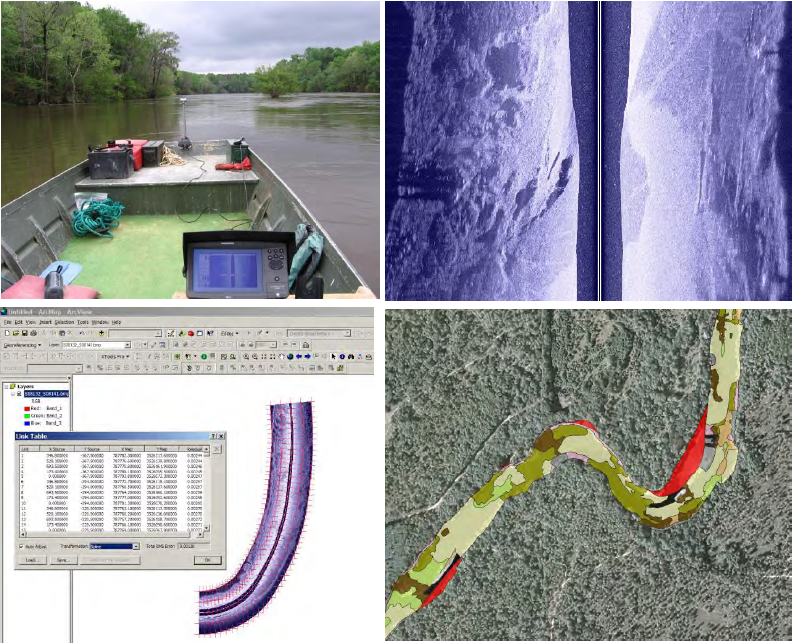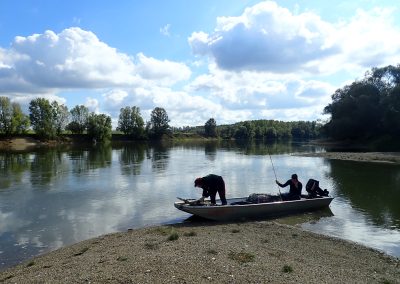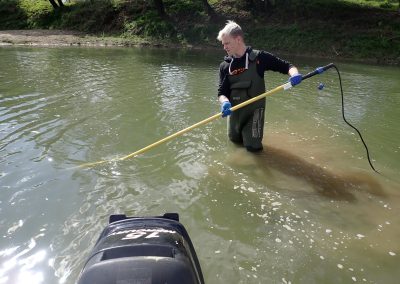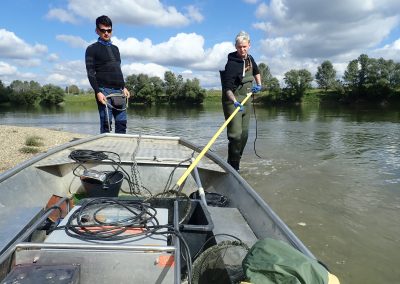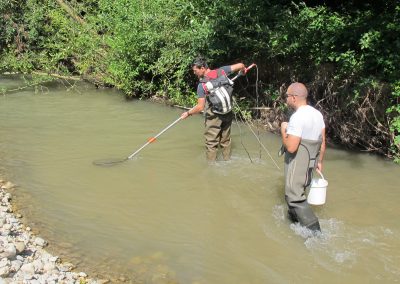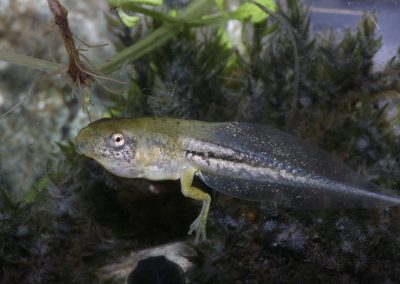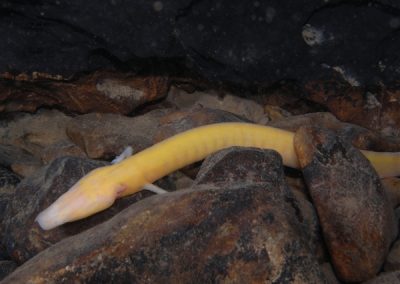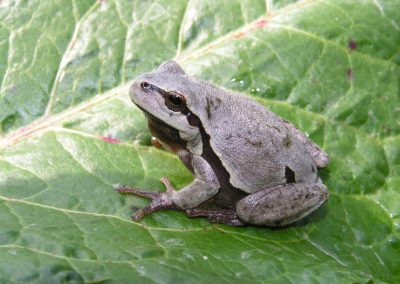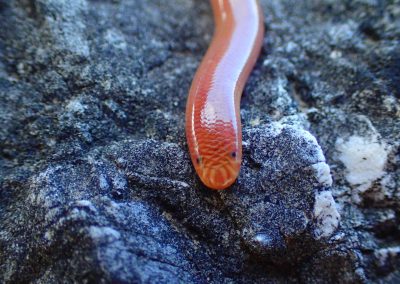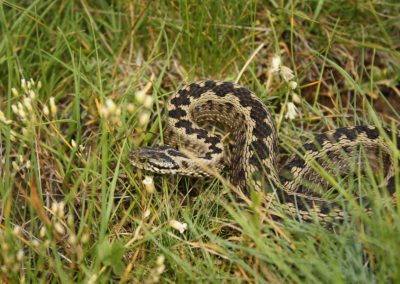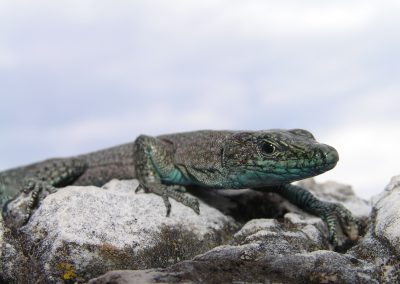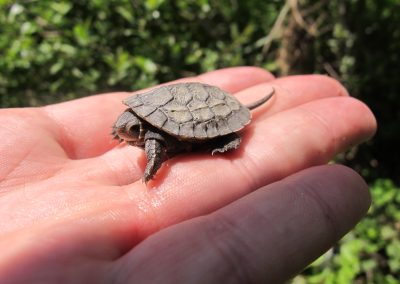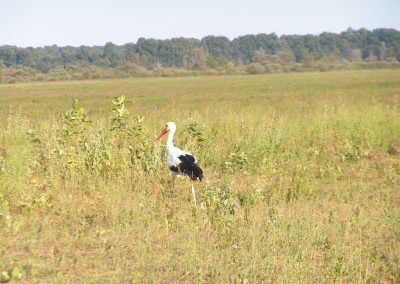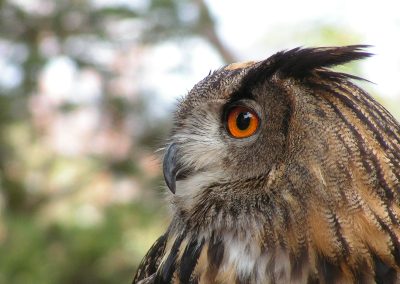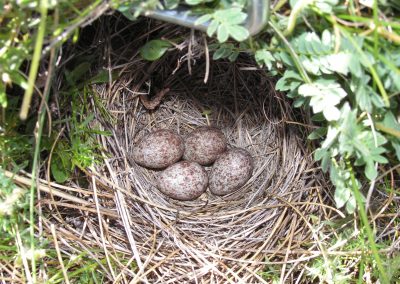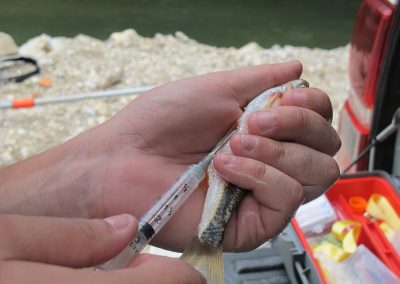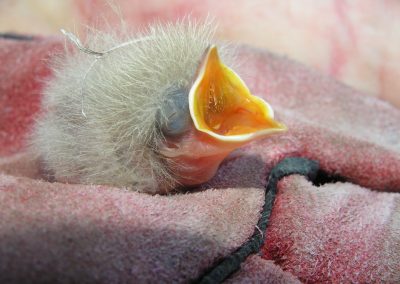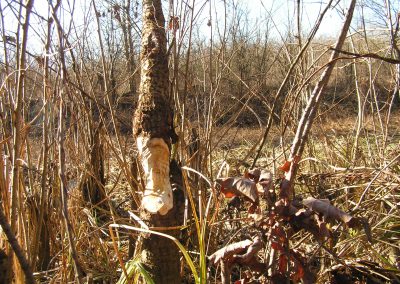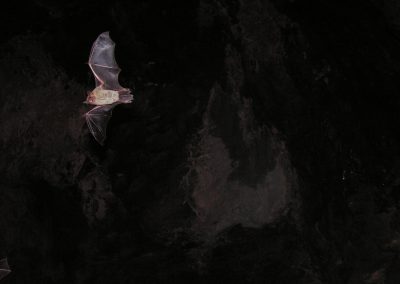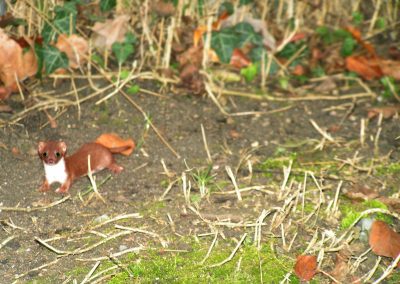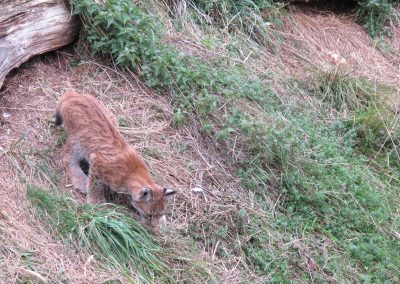Biodiversity Assessment and Monitoring
Methodology Used in Research
BIOTA d.o.o. conducts scientific, professional, and economic research on fish, reptiles, amphibians, birds, bats, and other mammals for both governmental and private clients across Croatia and the Balkans. We specialize in monitoring local and national wildlife populations. The data collected serves scientific purposes and is used in environmental impact assessments, habitat evaluations, species impact studies, and permits for the import of foreign species. Our research supports a wide range of projects, including wind farms, solar power plants, hydroelectric facilities, power lines, roads, fish farms, and river channeling. Additionally, we organize educational workshops, lectures, and programs, and create educational materials on biology, ecology, nature conservation, invasive species, green technologies, and sustainable development.

Fish Fauna Research
We employ invasive methods (e.g., electrofishing, gill nets) and non-invasive methods (e.g., visual census, environmental DNA) to study fish populations. The method choice depends on the research requirements, the type of habitat, and legal regulations. Data collected include population health, species presence, and the impact of various factors on populations. Our goal is to minimize environmental disruption and return specimens to their habitats.
Electrofishing is a comprehensive method for sampling freshwater fish populations, capturing all species within the electric field, regardless of size or habitat. This technique uses a positive taxic response, temporarily stunning fish for easy capture. Proper handling ensures all fish are returned unharmed after research procedures like identification and measurement. Read more in Service/Electrofishing
Sampling of Ichthyofauna Using Passive Methods (Nets and Traps)
In cases where water conductivity is too high (e.g., brackish water), when working in deep waters, or when research requirements demand it, passive fishing methods such as nets and traps can be used. These methods are relatively selective, as individuals are caught by entanglement in the net or by entering the trap. Selectivity is achieved by choosing different mesh sizes (larger meshes capture larger individuals, and vice versa), targeting specific habitats (bottom, surface, water column, or vegetation), or using bait in traps. While most fish caught in nets either die or are injured, the survival rate for those caught in traps is very high.
Environmental DNA (eDNA)
An increasingly popular method in research is eDNA, which, unlike traditional biological methods, involves collecting water samples to detect the presence of one or more target species using laboratory techniques (qPCR, electrophoresis, etc.). This method allows for the detection of species without physically capturing them. It is particularly useful for identifying rare species, species difficult to sample, or those inhabiting areas where conventional sampling methods are challenging to use.
Amphibian Fauna
Sampling of amphibians requires invasive methods due to the cryptic nature of species, high rates of hybridization, and often inaccessible habitats, making visual surveys impractical. The most common methods of sampling include hand nets and amphibian traps. Hand netting provides an immediate overview of species diversity. Traps are set in the water for an extended period (usually overnight) to capture species that are difficult to catch by net or that are active at night. These methods are used for fauna monitoring, assessing the condition and size of local amphibian populations, identifying threats, and more.
Environmental DNA (eDNA)
The collection of environmental DNA (eDNA) is used to detect elusive and hard-to-observe species and as a supplementary method for species detection in hard-to-reach locations. The method is based on collecting water samples containing DNA from various organisms in the environment. The sample is filtered, and the DNA is amplified and compared to reference samples for the target species. Reference samples are stored in existing DNA databases. If a species is not present in the database, DNA from the target species is collected to serve as a reference for comparison. This method is often combined with traps and hand nets and is used for monitoring and rough estimates of population sizes of organisms of interest. It also serves to confirm the presence of species that are rarely or difficult to capture, as well as those that have not been observed in a targeted area for long periods.
Genetic Research on Amphibians
Genetic research is used for studying criptic species (like green frogs of the genus Pelophylax), where it is currently impossible to reliably identify species without genetic analysis. The sample is a small piece of animal tissue suspended in 96% alcohol, but the entire animal can also be collected to examine potential morphological differences between species. The taxonomy of green frogs is relatively complex, and by using such methods, we can gain insight into species occurrence and detect the presence of foreign, invasive, or new species in the area of interest.
Diving in Speleological Objects
Diving in speleological sites, or cave diving, is used to monitor the status of existing populations of the olm (Proteus anguinus) and to explore potential habitats where the species may be present.
Reptile Fauna
Visual census is a common method for studying reptiles, relying heavily on visual identification. These surveys are typically conducted along transects (predetermined paths through the habitat) or within research polygons. The choice of method depends on the habitat and the study’s objectives. Transects are ideal for assessing reptile biodiversity in a given area, estimating population size, identifying threats, and understanding habitat preferences. Polygon-based studies are often combined with other tracking methods, providing insights into population status, species activity, habitat use, and behavior.
Animal Tracking Methods
The capture-mark-recapture (CMR) method is one of more intensive methods and is used on designated research polygons. It involves capturing individuals, marking them with unique tags, and releasing them back into their habitat. By comparing the ratio of new to recaptured individuals, researchers can estimate the population size of the area. This method also provides data on population structure, sex ratios, potential threats, behavior, and habitat use. It is important to note that CMR is a long-term tracking method, requiring several years of application in the same area to yield relevant data. Short-term tracking of reptiles is done using subcutaneous PIT tags, which are inserted under the skin of captured animals and this allows them to be recognised when tag is scanned again (recapture). Another method we use is tracking with fluorescent powder. A pouch with powder is attached to the animal, leaving a trail on the ground that can be followed at night with a UV light. These specific methods are useful in studies where threats are already identified, and it is necessary to assess the impact on local species and detect microhabitat preferences.
Various types of traps are used for reptiles, including pitfall traps, sticky traps, and others. The type of trap used depends on field conditions and the biology of the species being sampled. This method is rarely used alone and is often combined with other techniques, especially when tracking animals. Water terapins are comonly cought with funnel traps.
Bird Fauna
We employ a range of techniques to assess bird species presence and population density through habitat surveys, linear transects, and point transects with clearly defined recording zones. We also utilize drones to monitor colonial species, such as spoonbills (Platalea leucorodia) and mixed colonies of herons nesting in hard-to-reach reed beds, often combining these methods for comprehensive results.
By analyzing the data collected during monitoring, we can evaluate the conservation status, habitat suitability, and quality for the bird species being studied. This allows us to identify potential threats and recommend conservation measures. Monitoring methods are tailored to individual species or species groups, and to specific habitat types, following the national monitoring program by the Ministry of Economy and Sustainable Development.
Depending on the needs, monitoring can be performed seasonally or year-round, utilizing appropriate equipment such as binoculars, boats, GPS, sound recorders, and cameras. Linear transects involve continuous movement and recording of birds within or beyond a 50-meter radius, while point transects require standing at each point for 3-10 minutes, with species noted within 30 meters, 30-100 meters, or beyond 100 meters. Drone monitoring provides a fast, simple, and efficient way to count colonial species in difficult-to-access areas.
Mammal Fauna
Mammals vary in size and lifestyle, and apart from searching for signs of their presence, there is no single method for studying the entire group. Both invasive and non-invasive methods are used depending on the species being studied in a given area.
Searching for Signs of Mammal Presence
In addition to using other methods, it is essential to search the study area for signs of the presence of large, medium, and small mammals. These signs include footprints, droppings, scratch marks, dens, hair, prey remains, and vocalizations. We also place sand tracking plots and ink-and-paper tunnels along potential movement corridors to record additional evidence of presence (footprints in the sand or on paper). For some species, we use specific methods, such as wolf howling, where recorded howls are played, and we listen for responses, allowing us to estimate the number of individuals and their location. Experienced experts can also determine the composition of the responding group (adults or juveniles and their numbers).
Large and Medium Mammals
Camera Trap Monitoring – Large and Medium Mammals
We use this non-invasive, standard method to gather data on the presence and habitat use of large and medium mammals in the study area. Cameras are randomly placed to collect comprehensive data across the site. These can be used for short-term presence checks or year-long monitoring to gather detailed information on the species and establish a baseline for the area. Long-term monitoring is recommended, especially for large projects (e.g., wind farms or solar plants), and it’s advisable to continue monitoring during construction and for one year post-completion.
Medium and Small Mammals
Live Traps for Medium and Small Mammals
This invasive method captures live individuals, which are then identified and released unharmed at the capture site. Various types of live traps are used, with the most common being the “Sherman trap,” a small metal box that comes in different sizes for rodents and smaller carnivores. These traps are baited (usually with a mix of peanut butter and oats or apples) and close when the animal triggers the mechanism. The traps are placed along potential movement corridors or within specific research polygons and are checked every 4-6 hours to ensure the well-being of captured animals. This method provides data on species identification, population structure, sex ratios, and the presence of adult and juvenile individuals.
Bats
Acoustic Bat Monitoring with Ultrasonic Devices (Linear Transects and Long-Term Monitoring at Fixed Points)
We use standard, non-invasive methods to record echolocation signals, assessing the activity levels of various bat species and phonetic groups over large areas. High-quality ultrasonic devices, such as the Wildlife Acoustics SM4-BAT FS and Elecon Batlogger M, are used, along with software for analysis like Kaleidoscope Pro and BatExplorer Pro. Bat activity is monitored as needed, either for short periods (several nights/weeks/months) or over the long term (year-round). We can also record at greater heights (100 to 300 meters) using specialized drones, providing more accurate results for certain areas, such as wind farms. Monitoring is conducted along a linear transect of a specified length and duration or through long-term recordings at designated points.
Exploring Speleological Sites (Caves and Abandoned Above-Ground Structures)
We examine both new and known speleological sites and abandoned anthropogenic structures (houses, churches, attics, tunnels, etc.) to monitor local bat populations (maternity and hibernation colonies, migration, shelters).
Bat Capture Using Nets
In addition to acoustic monitoring, it is often necessary to capture bats to confirm species presence and collect other population data, such as sex ratios, reproductive status, and the presence of juveniles. Acoustic monitoring sometimes cannot identify species, particularly in enclosed habitats, where echolocation recordings are identified only to the genus or phonetic group. In such cases, the invasive method of capturing bats with nets is used alongside echolocation recordings.
Bat Monitoring at Wind Farms
In addition to standard research methods, wind farm sites require mortality assessments for bats, which involve multiple tests and calculations using statistical models. This includes searching a 70-meter radius around each turbine, recording various parameters (distance of the carcass from the turbine, species, age, condition of the carcass, terrain, visibility, etc.), and testing search efficiency (“SE – Search efficiency”) and carcass persistence (“CP – Carcass persistence”). These results are used to statistically estimate bat mortality rates for the entire wind farm over the active period each year.
Underwater construction
Sonar technology enables precise mapping of underwater areas, supporting safe and efficient planning for construction projects like bridges, dams, and other infrastructure.
Habitat mapping
By identifying the types of substrates and structures present, sonar helps create detailed habitat maps for environmental assessments and conservation planning. elements that set you apart from the competition.
Sediment Calculation
Sonar data allows accurate calculation of sediment accumulation in water bodies, helping in the management of dredging, erosion, and deposition processes.
Search for Specific Objects
Sonar can locate underwater objects such as columns, stumps, ruins, and other structures, aiding in archaeological studies, construction, or debris removal. It can also detect overwintering and feeding grounds of fish.
